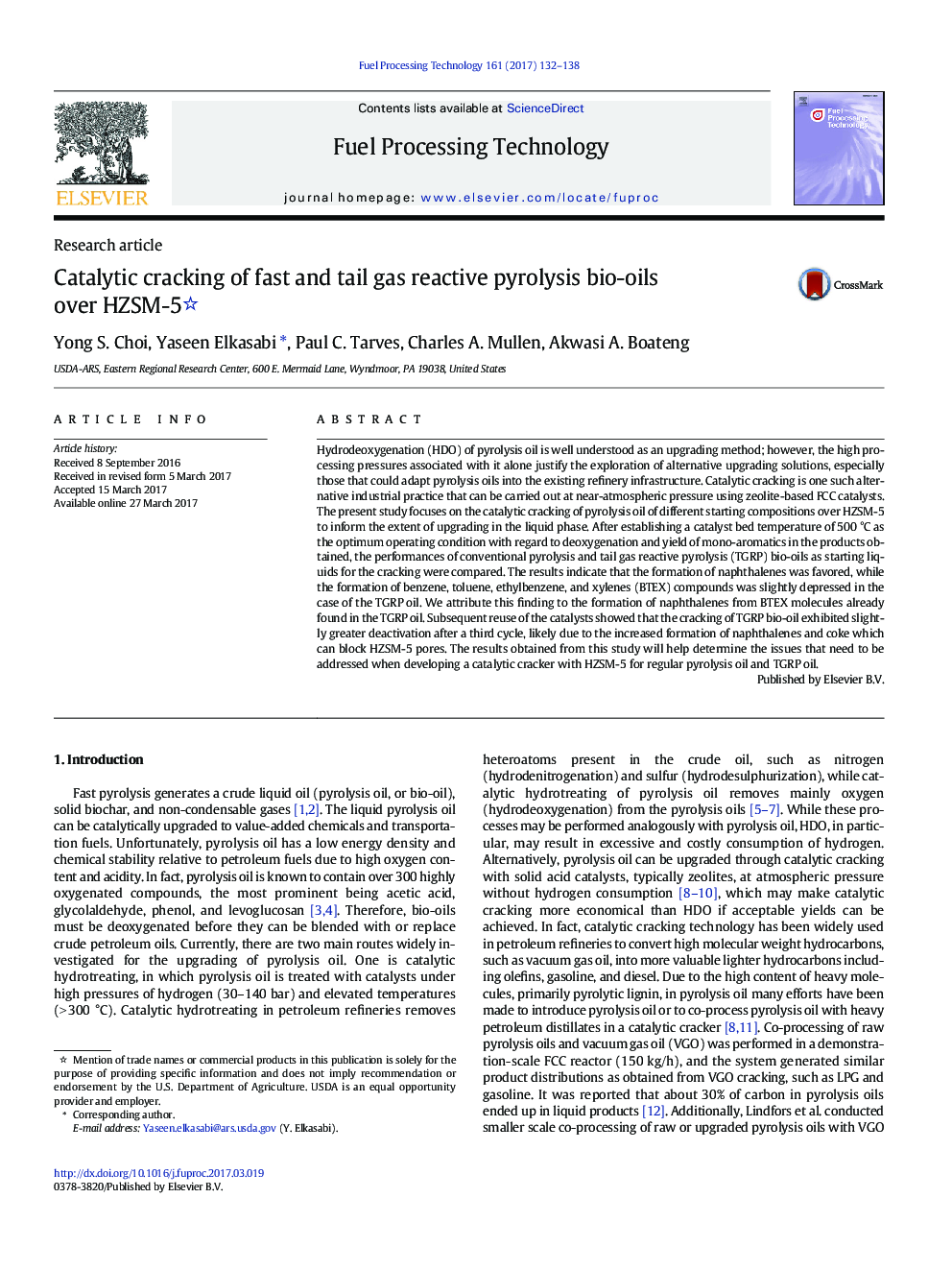| کد مقاله | کد نشریه | سال انتشار | مقاله انگلیسی | نسخه تمام متن |
|---|---|---|---|---|
| 6476484 | 1425385 | 2017 | 7 صفحه PDF | دانلود رایگان |
• Bio-oils made by tail-gas reactive pyrolysis (TGRP) and fast pyrolysis underwent catalytic cracking over HZSM-5
• Deoxygenated products were produced from both oils (1–2 wt% O).
• TGRP oils favored formation of naphthalenes, while regular bio-oil favored BTEX.
• Catalysts deactivated gradually for TGRP oils due to greater production of naphthalenes.
Hydrodeoxygenation (HDO) of pyrolysis oil is well understood as an upgrading method; however, the high processing pressures associated with it alone justify the exploration of alternative upgrading solutions, especially those that could adapt pyrolysis oils into the existing refinery infrastructure. Catalytic cracking is one such alternative industrial practice that can be carried out at near-atmospheric pressure using zeolite-based FCC catalysts. The present study focuses on the catalytic cracking of pyrolysis oil of different starting compositions over HZSM-5 to inform the extent of upgrading in the liquid phase. After establishing a catalyst bed temperature of 500 °C as the optimum operating condition with regard to deoxygenation and yield of mono-aromatics in the products obtained, the performances of conventional pyrolysis and tail gas reactive pyrolysis (TGRP) bio-oils as starting liquids for the cracking were compared. The results indicate that the formation of naphthalenes was favored, while the formation of benzene, toluene, ethylbenzene, and xylenes (BTEX) compounds was slightly depressed in the case of the TGRP oil. We attribute this finding to the formation of naphthalenes from BTEX molecules already found in the TGRP oil. Subsequent reuse of the catalysts showed that the cracking of TGRP bio-oil exhibited slightly greater deactivation after a third cycle, likely due to the increased formation of naphthalenes and coke which can block HZSM-5 pores. The results obtained from this study will help determine the issues that need to be addressed when developing a catalytic cracker with HZSM-5 for regular pyrolysis oil and TGRP oil.
Journal: Fuel Processing Technology - Volume 161, 15 June 2017, Pages 132–138
